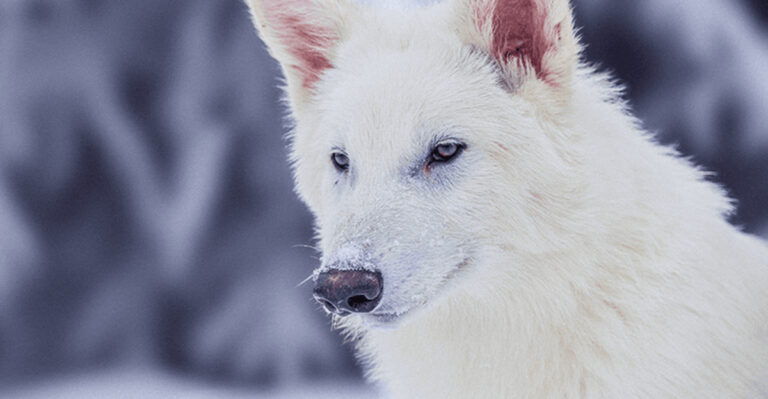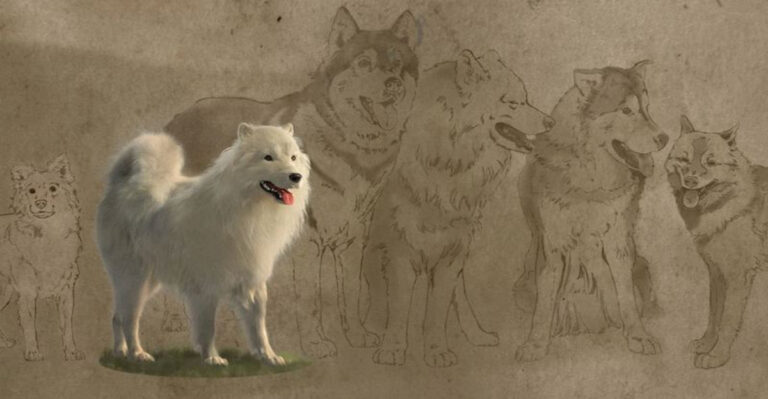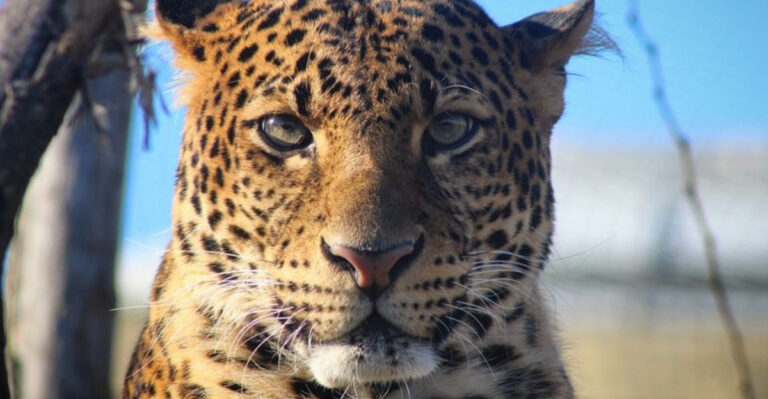Everything You Need To Know About Narwhals
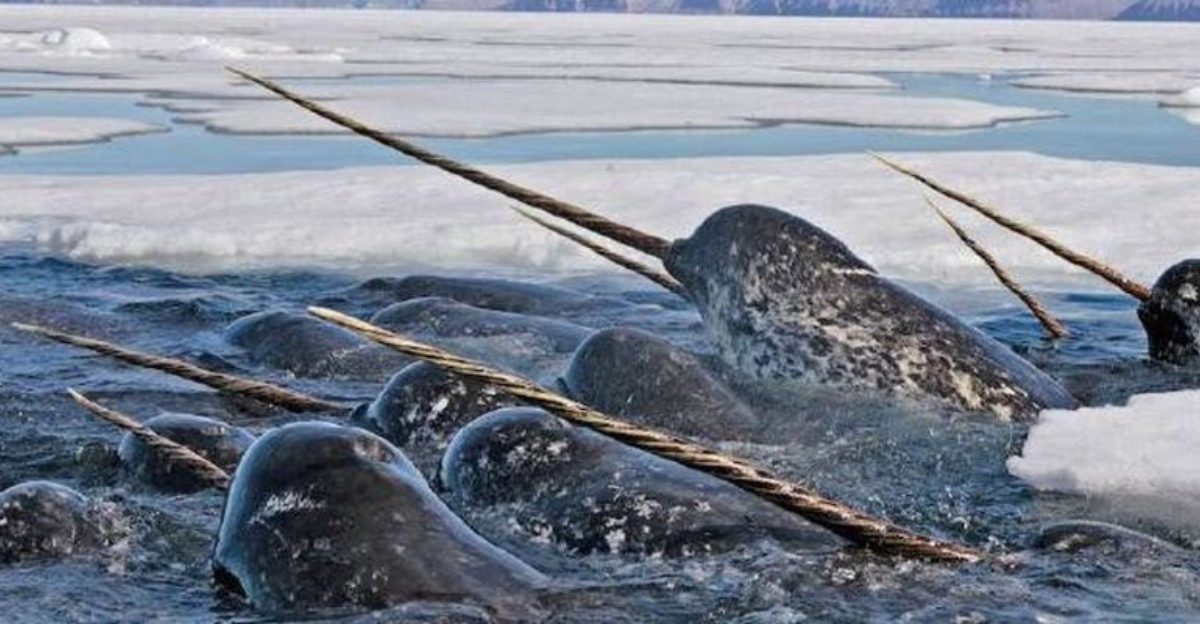
Narwhals are fascinating marine mammals that captivate our imagination with their distinctive spiral tusks.
These elusive creatures glide through the icy Arctic waters, shrouded in mystery and folklore. Whether you’re curious about their unique adaptations or their cultural significance, these essential facts will unveil the secrets of these remarkable ‘unicorns of the sea.’
1. “Unicorns Of The Sea”
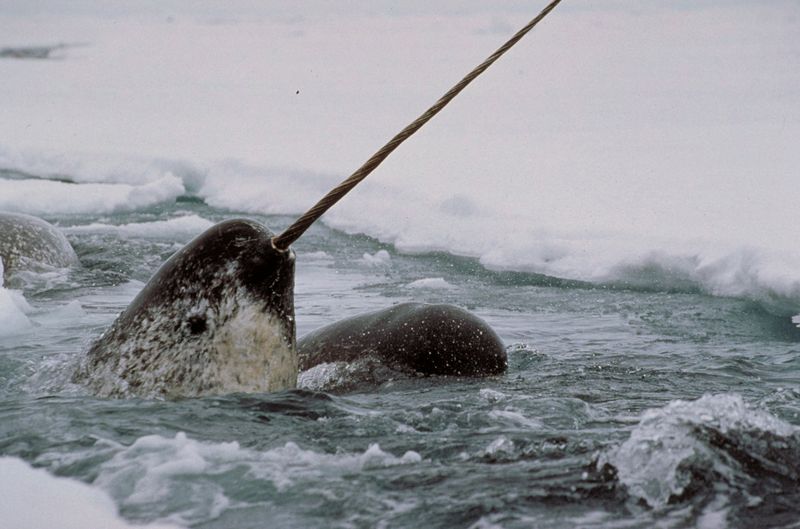
Sporting that iconic spiral tusk jutting from their heads, narwhals earned their mythical nickname centuries ago.
Many medieval Europeans believed narwhal tusks were actual unicorn horns with magical powers! The resemblance is striking enough that narwhal tusks once sold for more than their weight in gold. Royalty treasured these spiraled protrusions as protection against poisoning.
2. Their Tusks Are Mysterious

Scientists puzzled over narwhal tusks for centuries before making a remarkable discovery. The tusk contains millions of nerve endings that can detect subtle changes in water temperature, pressure, and even particle gradients.
Males sometimes rub tusks together in a behavior called “tusking.” Far from being weapons, these extraordinary appendages function more like sensory organs – helping narwhals navigate their complex Arctic environment.
3. Narwhals Live In The Arctic

Masters of the frozen north, narwhals thrive in waters that would kill most mammals. They prefer the icy embrace of Baffin Bay, Greenland Sea, and the Arctic Ocean where temperatures plunge below freezing.
Unlike many whale species, narwhals actually seek out heavy pack ice. Their incredible adaptation to extreme cold allows them to navigate beneath solid ice sheets, surfacing at small cracks to breathe.
4. They Are Close Relatives Of Beluga Whales
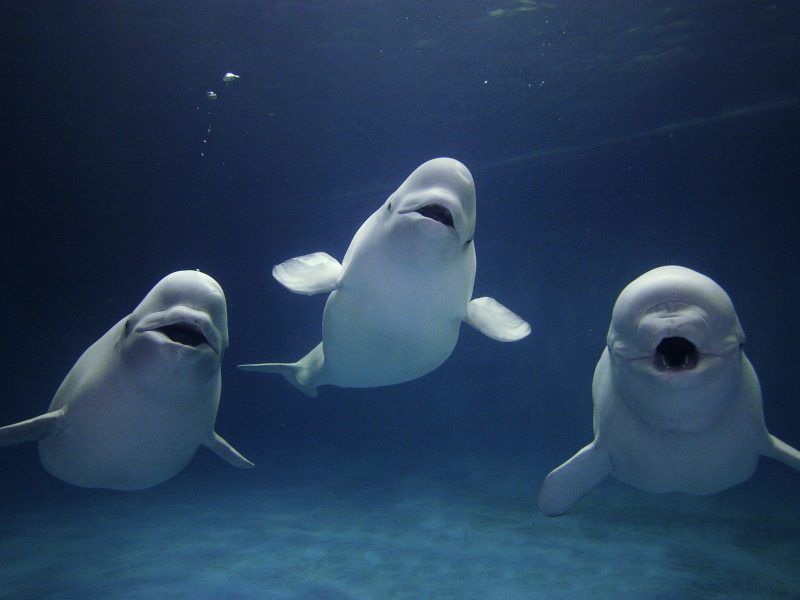
Family resemblance runs strong between narwhals and their ghostly white cousins. Both belong to the Monodontidae family and share distinctive bulbous foreheads that house specialized echolocation organs.
These Arctic specialists evolved without dorsal fins – a clever adaptation that prevents ice entrapment. Scientists have even documented rare hybrid offspring when these cousins meet, proving their genetic closeness.
5. Their Tusks Are Actually Teeth
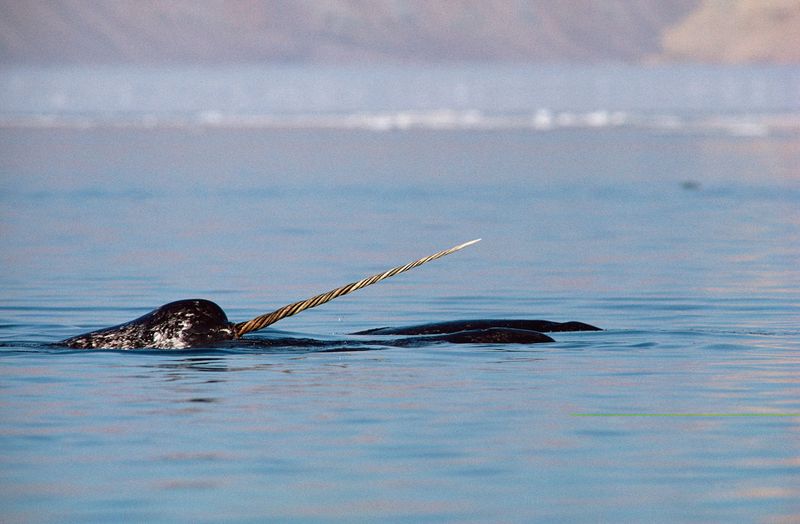
What appears magical is actually dental! The narwhal’s iconic tusk is actually an elongated left canine tooth that spirals counterclockwise and protrudes through the upper lip.
Most males develop this extraordinary tooth, which can grow up to 10 feet long. About 15% of females also grow tusks, though typically smaller ones. Some exceptional narwhals even develop double tusks when both left and right teeth emerge.
6. Narwhals Can Dive Deep

Few mammals can match the narwhal’s impressive diving abilities. These remarkable creatures routinely plunge to depths exceeding 5,000 feet – deeper than most military submarines can safely operate! Their specialized physiology allows them to withstand crushing pressure.
During these deep-sea expeditions, narwhals hunt for halibut, cod, squid, and shrimp, staying submerged for up to 25 minutes before returning to the surface.
7. They Communicate Using Clicks And Whistles
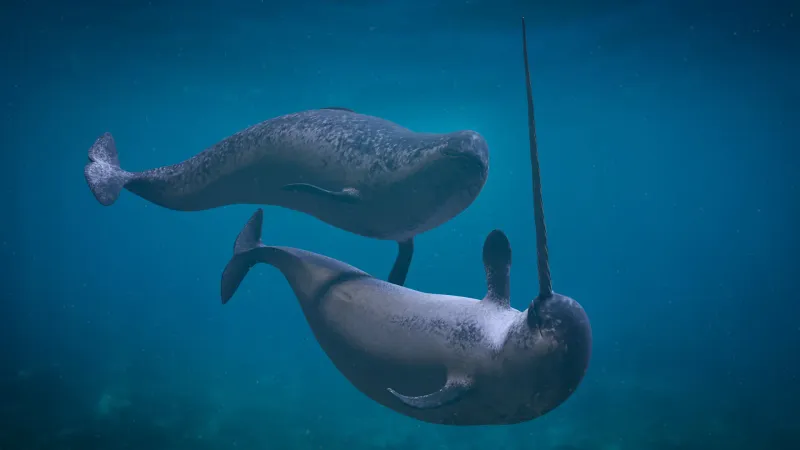
Beneath the Arctic ice, narwhals create a symphony of sounds invisible to human ears. Their complex vocalizations include clicks, whistles, and pulsed calls that bounce off underwater objects.
This sophisticated echolocation system allows them to navigate in pitch-black waters and locate prey hidden in sediment. Each narwhal pod develops distinctive communication patterns, creating what researchers describe as regional “dialects” unique to specific groups.
8. Narwhals Are Not Endangered, But Vulnerable

Population estimates suggest approximately 75,000 narwhals still navigate Arctic waters. While not officially endangered, they face mounting threats that have earned them a “vulnerable” conservation status. Climate change poses their greatest challenge as melting sea ice disrupts feeding patterns.
Traditional hunting by indigenous communities continues under regulated quotas, but increased shipping, oil exploration, and ocean noise pollution create additional stressors for these sensitive creatures.
9. Narwhals Are Social Animals
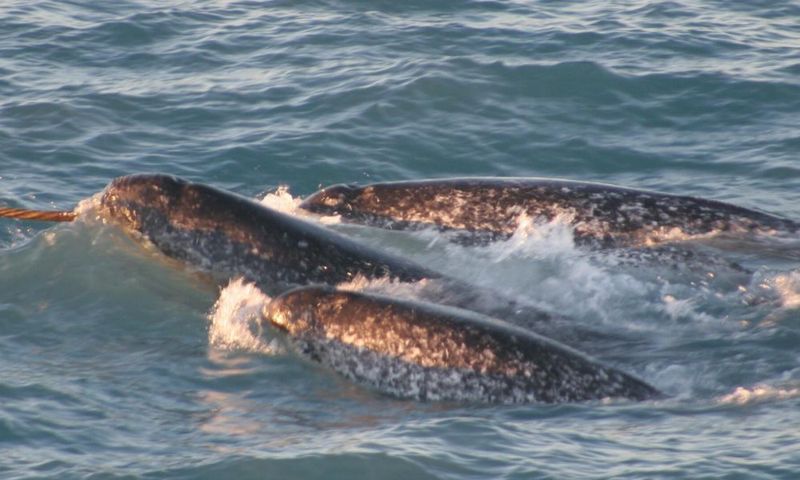
Community defines narwhal existence. They travel in tight-knit pods typically numbering 15-20 individuals, though massive gatherings of thousands have been documented during seasonal migrations. These social bonds provide protection and hunting advantages.
Pod members often include related individuals who maintain lifelong connections. Fascinating research reveals narwhals form complex friendships, with individuals preferring to swim alongside specific companions year after year.
10. Narwhals Migrate Seasonally
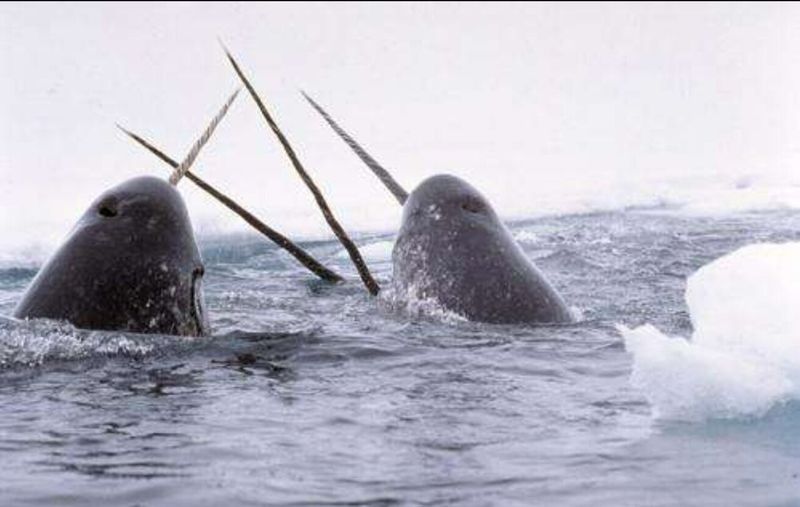
Twice yearly, narwhals embark on epic journeys spanning hundreds of miles. Summer finds them gathering in coastal fjords and inlets of Canada and Greenland, where food is plentiful and calves can be born in sheltered waters.
As winter approaches, they migrate to deeper offshore waters, navigating beneath thick sea ice. This remarkable journey follows ancient routes passed down through generations, with the animals timing their movements precisely with seasonal ice formation.
11. Their Tusk Growth Is Linked To Age And Hormones
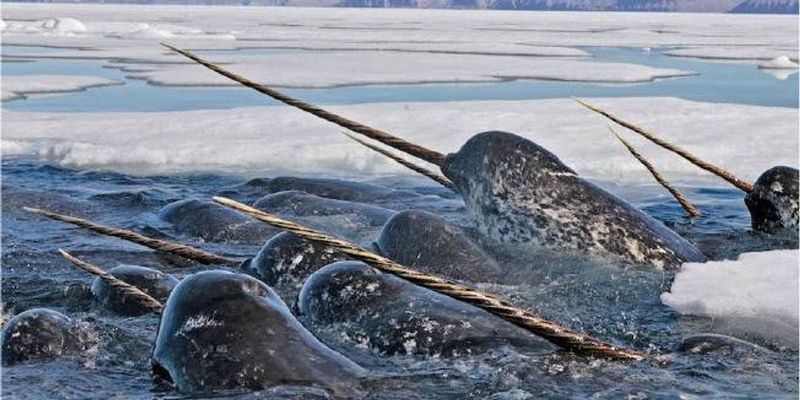
A narwhal’s magnificent tusk tells its life story. Growing continuously throughout their 50-year lifespan, these tusks add distinct annual layers like tree rings that scientists can count to determine age. Hormonal surges during mating season correlate with increased blood flow to the tusk.
Researchers recently discovered that tusks contain a chronological record of environmental contaminants, essentially functioning as time capsules of ocean health spanning decades.
12. They Are Part Of Inuit Culture

For thousands of years, Inuit communities have shared their Arctic home with narwhals. These magnificent creatures feature prominently in traditional stories, art, and spiritual beliefs.
Hunting narwhals provided crucial survival resources – meat for nutrition, blubber for oil lamps, and tusks for tools and artwork. Many Inuit communities maintain sustainable harvesting practices today, with every part of the animal utilized in accordance with generations-old traditions.
13. Narwhals Are Vulnerable To Climate Change
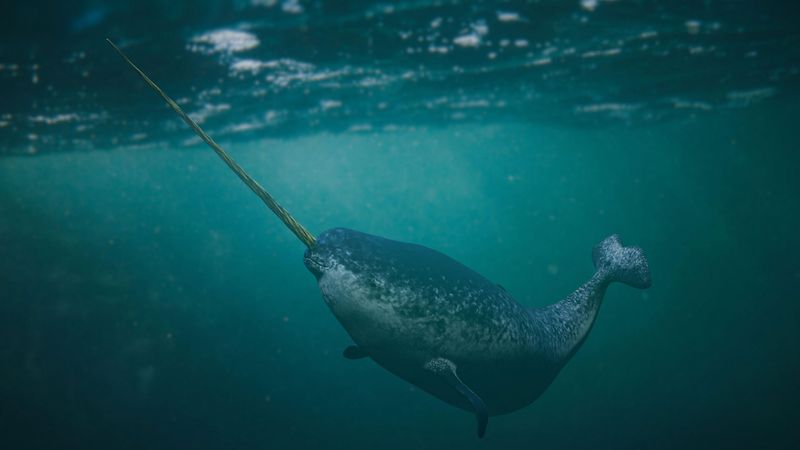
Rising Arctic temperatures spell trouble for these specialized marine mammals. Narwhals evolved specifically for life among sea ice, which provides protection from predators like killer whales. As ice recedes, killer whales gain unprecedented access to narwhal habitat.
Changing ocean conditions also disrupt food chains and feeding patterns. Additionally, increased human shipping through newly ice-free Arctic passages creates noise pollution that interferes with narwhal communication and navigation.



